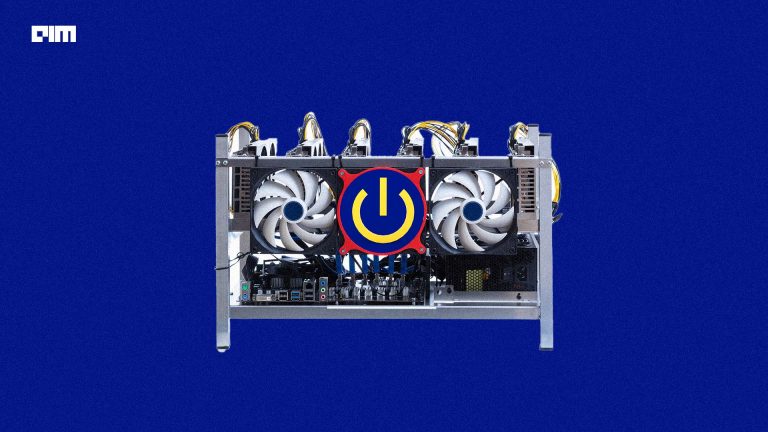|
Listen to this story
|
US-headquartered Micron Technology is one of the leading companies and semiconductor brands to offer state-of-the-art memory solutions to data centres.
Analytics India Magazine caught up with Rajesh Gupta, Director, Country Manager- India Sales, Micron Technology to understand the status quo of the data centre industry; opportunities and challenges; and the road ahead.
Excerpts:
AIM: Tell us in detail about Micron’s memory solutions?
Rajesh Gupta: Our broad portfolio of high-performance memory and storage technologies, including DRAM, NAND, and NOR, is transforming how the world uses the information to enrich life for all.
We have successfully built memory chips using the world’s most advanced DRAM process technology, which offers major improvements in bit density, power and performance. Our innovation is helping customers protect themselves against security attacks of ever-increasing frequency and sophistication.
Our specific innovation efforts include:
Higher capacity and performance: In Micron’s core area of DRAM and Flash, we are increasing capacity, bandwidth, energy efficiency and packaging options for new form factors.
New memory technologies: We are working on new ways to hold data, for which the terms “memory” and “storage” may no longer be adequate towards the delivery of independent memory and storage systems.
Future innovation: From future memory and storage standards development to data innovations for quantum computing, Micron engineers incubate future technologies to fuel future entries to our data-centric portfolio. The recent announcement of 176-layer 3D flash memory, the world’s most technologically advanced NAND.
New ways to hold data: Data Center IT and cloud managers want the fast, low latency and consistent performance of NVMe storage that won’t break the budget. The Micron 7`300 leverages the low power consumption and price-performance efficiencies of 3D NAND technology, delivering fast NVMe IOPS and GB/s for a wide array of workloads.
AIM: How does Micron cater to the needs of Data centre space?
Rajesh Gupta: We deliver a broad portfolio of data centre memory and storage across hyperscale and enterprise environments. We meet the demands of today’s data centers through the acceleration of our DRAM and NAND innovation cycle, delivering new capability to data-centric platforms.
- To improve AI inference at scale, we have partnered with NVIDIA on the delivery of GDDR6X, the first in the industry to implement multilevel signalling in memory, creating a new benchmark for future generations of graphics memory.
- For energy-efficient memory scaling required in high-performance computing, we are delivering HBM solutions to the market.
AIM: What does the future of data centre design look like?
Rajesh Gupta: As we address today’s memory and storage infrastructure needs, we have an eye on the future of data centre design. Our fundamental computing architecture today is pushing against limits to future cloud scalability. Performance and energy efficiency are not improving fast enough to keep pace, and fundamental changes to the way compute platforms are built are required to push innovation further.
The scale and efficiency of cloud computing and accelerated insight of AI has driven a requirement to re-architect data-centric infrastructure. The industry is developing infrastructure models to support fully composable, computing systems that create virtual compute, memory, storage and I/O resource pools that can be independently scaled based on workload requirements. This moves places data at the centre of computing and represents a tremendous opportunity for memory and storage innovation.
AIM: What is the role of semiconductor/memory companies like Micron in data centre technology?
Rajesh Gupta: The industry has identified the next wave of cloud innovation in the delivery of composable infrastructure where each element of the platform, compute, memory, storage and I/O, can be scaled independently, and the fundamental equation of scale moves beyond the server node that has fueled data centre innovation for two decades.
However, this vision is not possible without significant memory and storage innovations that move us towards a model where data, not compute, is at the centre of the system. Micron technology innovation delivers new architectures for composable memory pools and scalable data centre storage resources. Our solutions enable the collection, storage, and management of data, turning that data into insights and intelligence with unprecedented speed and efficiency.
AIM: What’s your take on the looming global chip crisis?
Rajesh Gupta: From computers to cars, chips are at the centre of them all. There has been a rise in demands for memory due to increasing 5G smartphones and artificial intelligence software. The global shift to remote work due to the pandemic has also led to a boost in the demand.
The market is currently facing a severe undersupply. This shortage is expected to tighten through the year. We are looking at a multitude of ways to solve customer’s needs for increased supply.
Massive demand across various end markets, combined with disruptions at a few logic and foundry semiconductor producers, has resulted in a shortage of non-memory ICs, and we believe memory demand would have been even greater without these shortages.
Despite the challenges of pandemic, shortages in the electronics industry, and other disruptions at our Taiwan fab, Micron has been able to mitigate the impact on our production output through proactive supply chain and inventory management strategies.
AIM: Tell us about India’s semiconductor market
Rajesh Gupta: Today, the industry is challenged to fuel the wide adoption of multi-cloud infrastructure to enable broad deployment of AI-enabled applications. Memory and storage are at the heart of the semiconductor industry and are a critical enabler of the technologies driving economic growth and well-being.
There is a complete shift in the outlook of businesses and the industry. We can foresee a new paradigm when it comes to changes in the way companies are working today because of the new hybrid working models that have come into play post-Covid-19.
There is a significant change in consumer behaviour, leading to increasing online activity, including e-commerce, gaming, and video streaming, all of which is driving additional data centre capacity requirements.
Recovery from the pandemic and pent-up demand are expected to drive demand growth in markets such as enterprise, cloud, desktop PCs, mobile, auto industry.
AIM: What are the short-term and long-term plans for Micron?
Rajesh Gupta: The long-term plan for us revolves around building our portfolio. We are on track to begin customer qualification of our next-generation client SSDs using 176-layer NAND in the fiscal second half of 2021. By the end of 2021, Micron expects to cover multiple segments of the market, including consumer, value OEM and premium OEM with our 176-layer-based client portfolio.
We partner closely with our customers, industry, governments, communities, and team members to develop the next disruptive applications and end products in a sustainable way across the 17 countries in which we operate. Micron is working with key OEMs and tier-one partners on centralizing storage, enhancing security, and deploying automotive-grade SSDs for next-gen architectures for 2023 and beyond in the areas of IVI and automated driving and central computer architectures.
On the India front, we have had a few key collaborations over the last year. We recently partnered with Tata Communications to announce the launch of the world’s first cloud-based embedded SIM, a ground-breaking solution to accelerate and simplify the deployment of IoT devices at a global scale.
Also, in line with supporting the tech talent and fostering technological innovation along with boosting economic growth, Micron recently introduced the Micron University Research Alliance (URAM) that focused on building talent in science, technology, engineering, and math (STEM) and aimed to reach over 10,000 students in India.

















































































